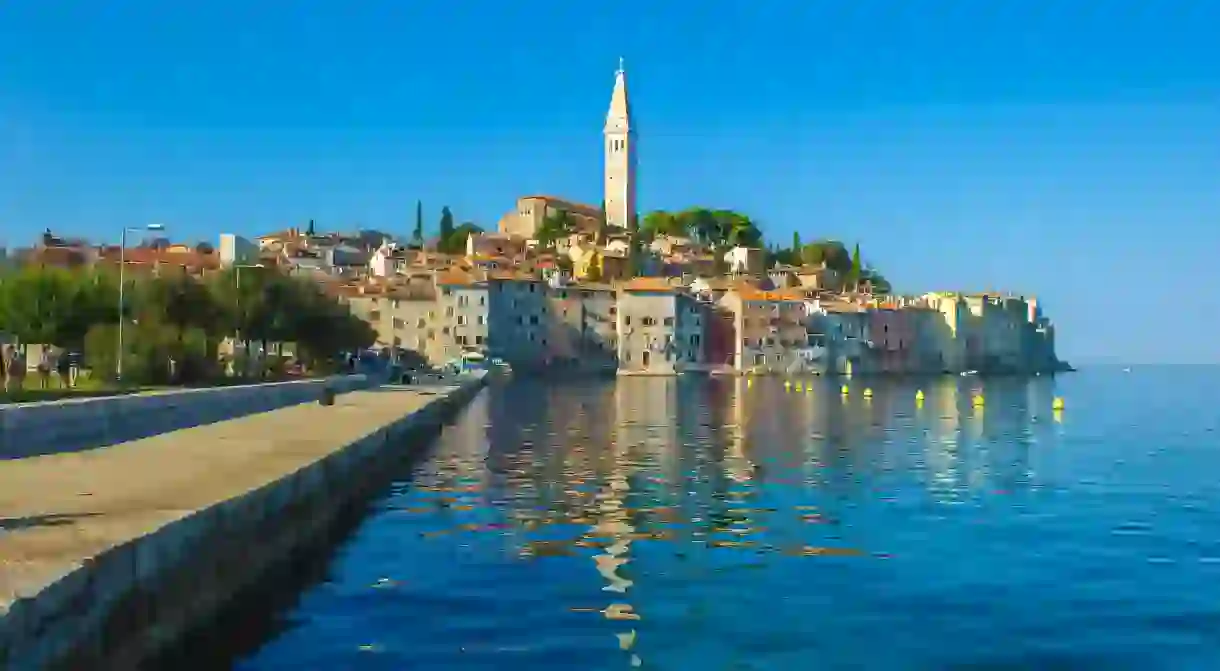A Guide to Sailing Around Istria and Kvarner, Croatia

Istria is the heart-shaped peninsula that crowns Croatia, with 450km (280mi) of coastline that’s practically custom-made for chartered yachts. The region boasts three archipelagos, two gorgeous coastlines and one maritime national park, plus plenty of opportunities to snorkel, kayak, cliff jump and fist bump with glee. The jewels in the crown are Istria’s Kvarner Islands: Krk, Cres, Losinj, Rab and Pag are blessed with sandy shallows, hiking trails and mooring-buoy bays. Anchor your boat in one of them and let life unfurl easily, like the flutter of a sail.
Explore stunning coastline and islands with the unique Culture Trip’s Sailing Trips.
What to see and do



Pula, Istria’s biggest and best city, has saltwater in the blood. The fish market is a sashimi fantasy of tuna, sea bass and red prawns. The cliff-diving coves south of town are Instagram heaven. And if Pula’s cafe culture appears Italian, its because the Romans founded the city and built its 20,000-seat amphitheatre to boot. Inside the venue, you can play gladiators by day, while Tom Jones and Manu Chao lay on live concerts by night.
Then set sail for the Brijuni Islands. These 14 forested specks sit 2km (1mi) from Istria’s coast to form a national park alive with loggerhead turtles and bottlenose dolphins. And zebras and elephants, too (both gifts from foreign leaders when the Brijuni Islands were a private presidential retreat)! Tie up in Brijuni Port, where world leaders from Queen Elizabeth II to Che Guevara have disembarked, with an al fresco photo exhibition to prove it. Anchorages include mooring buoys off Mali Brijun, the second-largest Brijuni island.
Best mooring locations

Like most marinas on Istria’s snaggletooth coastline, Marina Veruda (VHF 17) moors boats within a magnificent natural harbour, crested by fragrant pines. The marina is big (630 berths) and friendly, and sits at the epicentre of Croatia’s bareboat and skippered yacht charter industry.
Marina Veruda promises day-sail access to the Brijuni Islands, Rovinj Islands, Cres and every other Istrian maritime-must. It also boasts bus, taxi and hardy hiking access into downtown Pula. In high summer, you’ll pay around €30 for a 10m (33ft) berth, and €80 for 20m (66ft). Or anchor for free off Cifnata beach on the foodie island of Rab. If it’s too busy, simply breeze into the deserted bay nextdoor.
Where to eat and drink

Istria is Croatia’s foodie capital: a gluttonous triangle scattered with black truffles, wild asparagus, flinty vineyards, gamey goulash and pastries left by Austro-Hungarian forebears. For seafood, the pick of polished addresses is Farabuto, which sits in a Pula seaside suburb (handy for sleeping off lunch on the beach). Order dishes like langoustine with squid-ink rice, clams with garlic toast and carpaccios of every Adriatic fish going. The boat-friendly Istrian port of Fancita also has seafood aplenty. Squid are grilled and mussels are plucked just beyond the marina.
Where to get groceries
At Marina Veruda, the Roto minimarket will sell you an Ožujsko beer and a Dalmatian prosciutto sandwich. For greater provisions, walk on to the bigger Studenac supermarket for truffle cheese, fresh brioche, spicy chutney, moreish Bobi potato chips, pickles, pastries, jams and hams.
Key annual sailing events

Around Easter, the Pesaro-Rovinj Regatta breezes from Italy to Istria. The race’s aim is to showcase similarities between the two regions: Rovinj is a bilingual Croatian/Italian city and the regatta’s two-masted schooners are common to both coasts. The autumn race, from Opatija to Galijola – a lighthouse island in the Bay of Kvarner – is an all-night affair. At sunrise, competitors might spot dolphins and forget about their own lack of sleep temporarily.
Climate and weather

Istria was made by Mother Nature with sailboats in mind. Stiff winds in May and October give way to softer daytime breezes – generally between 5 and 15 knots – from June to September. Blue skies are the norm, but occasional showers pass quickly.
What’s important about Istria is that the region rarely gets as searingly hot as Split and Dubrovnik, some 500km (311mi) to the southeast. Note that Istria’s indented coastline can bend and reflect local winds, while squeezing breeze through island gaps. Tides can run to 1 knot, but lessen as you sail south.
How to get there
All roads lead to Pula Airport. From here it’s a 15-minute taxi ride to either Pula’s historic centre or to the marinas that garland the southern Istrian shore. From the airport it’s a 45-minute drive to Istria’s biggest coastal resorts, including Rabac, Porec and Rovinj. Pula, Porec and Rovinj also have weekly ferries to Venice.
Did you know – Culture Trip now does bookable, small-group trips? Pick from authentic, immersive Epic Trips, compact and action-packed Mini Trips and sparkling, expansive Sailing Trips.













